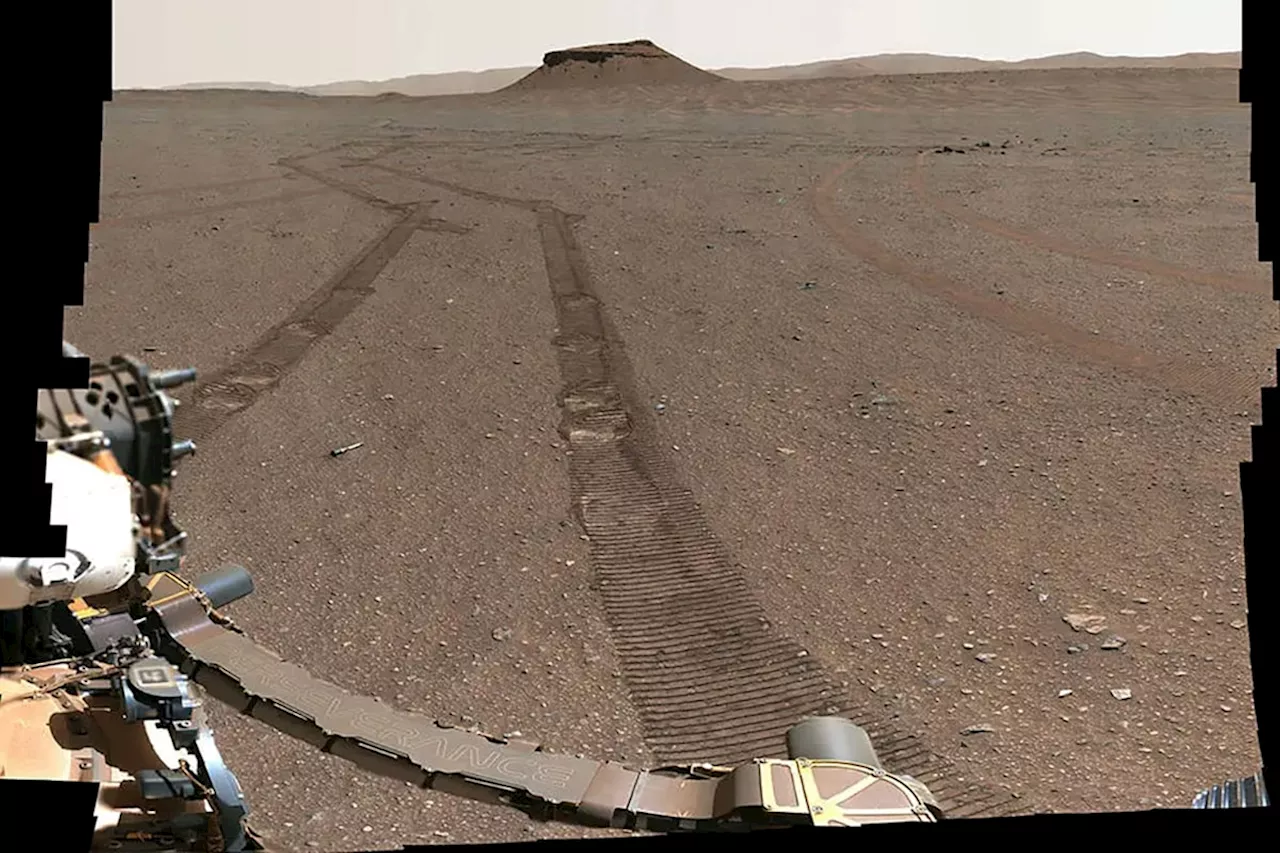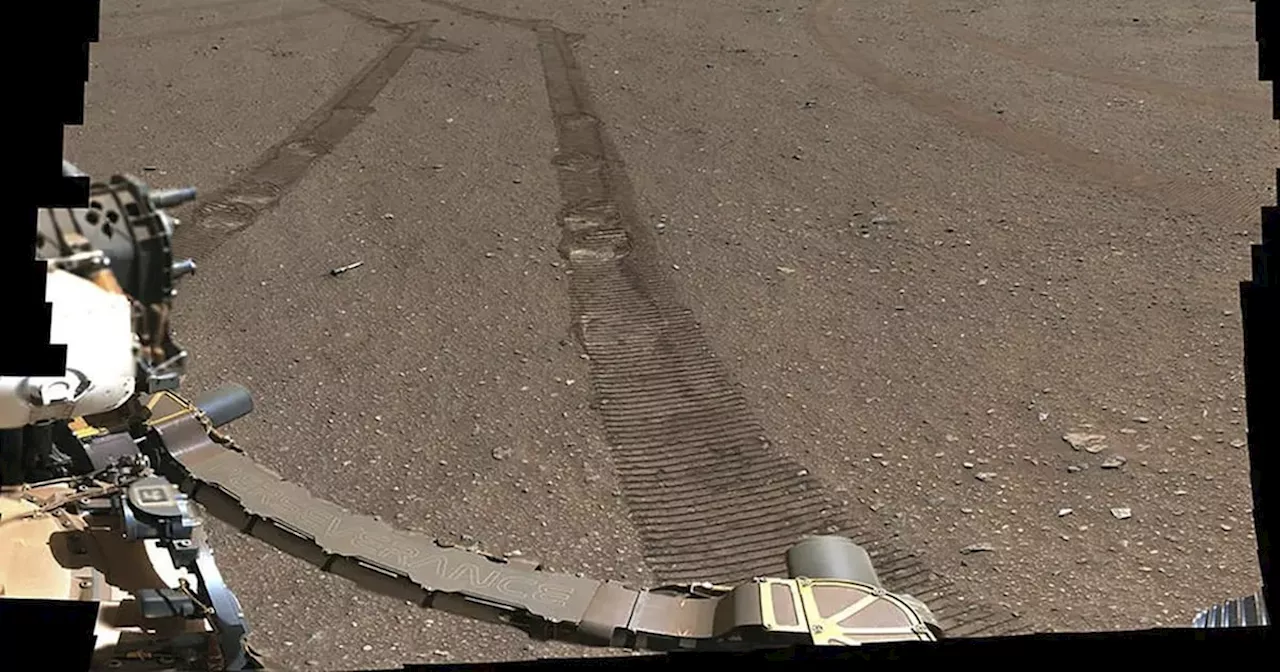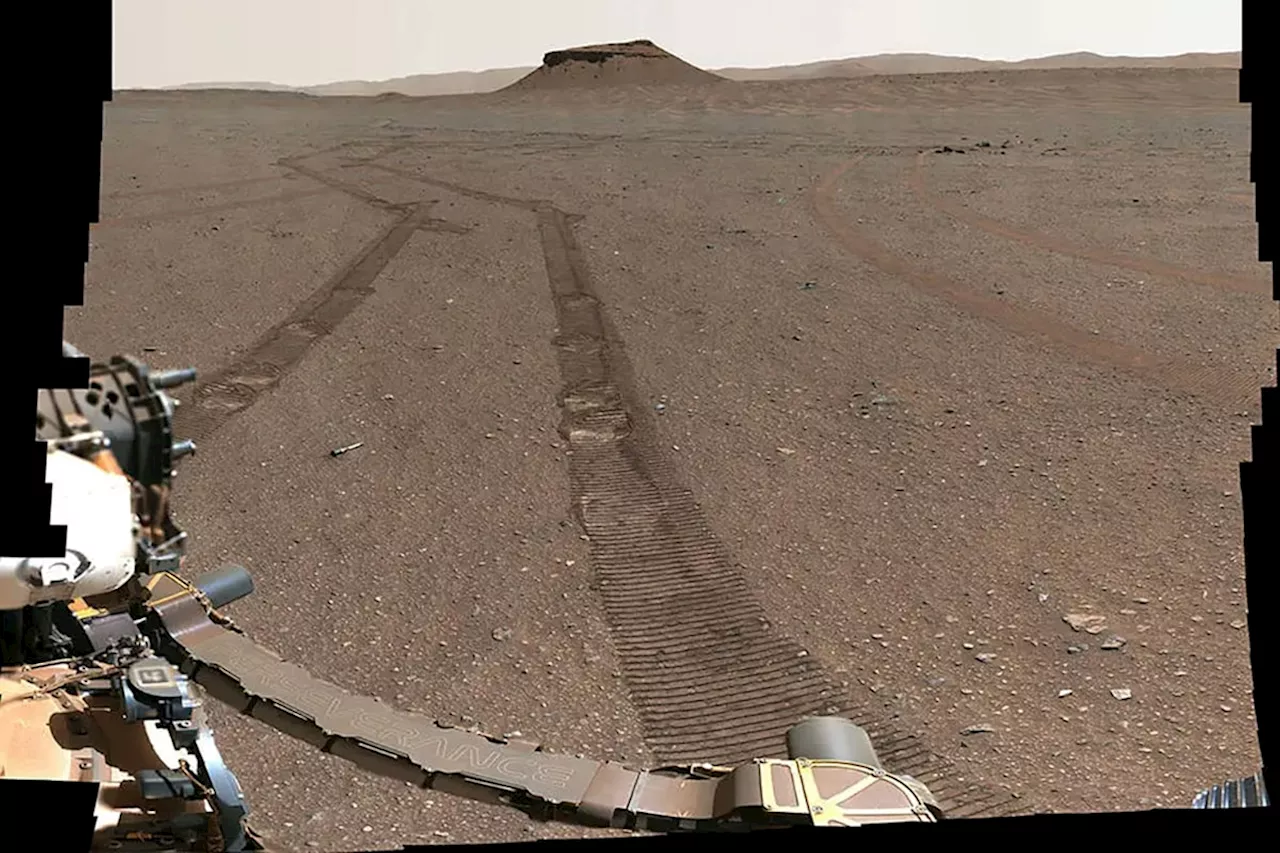The Perseverance rover is uncovering the secrets of Mars's past. The rover's latest findings suggest that the planet once had a much wetter climate and was volcanically active during the early Hesperian period. This information could shed light on how long ago Mars became the dry, barren world we see today.
The surface of Mars is frigid and desiccated today, but billions of years ago it was a different story. Empty riverbeds and other telltale features speak to an abundance of surface water early in the planet’s history. This evidence has long fuelled scientific interest in exploring Mars , and has added incentive to those pursuing a future human mission there. This week, newly inaugurated U.S.
President said he intends to accelerate such a project by “launching American astronauts to plant the Stars and Stripes on the planet Mars.” Mars Perseverance rover is shedding additional light on the planet’s shift from a watery past to a harsher present. The results suggest what more may be learned when samples are returned to Earth, including how long Mars remained a habitable world. It could also inform the focus of future missions. “We’re looking at a really interesting period in Mars’s history when models suggest there was a transition from a time of widespread volcanic activity to more focused hot spots,” said Marieke Schmidt a geologist at Brock University in St. Catharines, Ont., published Friday in the journal Science Advances. The study is the most complete to date from a series of observations conducted on the floor of Jezero crater, where the rover touched down nearly four years ago in February 2021. Members of the mission’s science team were attracted to the site because a river once flowed into it, forming a lake with an extensive river delta. Initially, some expected that once the rover landed it would be sitting atop ancient lake sediment, a potential place to look for traces of past microbial life. Dr. Schmidt was among those who thought the rocks were volcanic, which has since proved to be the case. That means wind erosion likely scoured sedimentary material out of the crater well after the lake dried up, leaving behind a harder, more resistant basement of igneous rock, much like the basalts that make up Iceland or Hawaii. Perseverance has since left its landing site to explore the delta, where sedimentary rocks are still present, and has exited the crater. But those initial rocks it encountered remain of high interest, Dr. Schmidt said, because theySome of the most reliable information about past conditions on Mars comes from studies of rocks that were blasted off the planet’s surface and landed on Earth as meteorites. However, there are no Mars meteorites that correspond to the time when lava hardened on the floor of Jezero crater, Dr. Schmidt said. This is called the early Hesperian period, roughly 3.4 to 3.7 billion year ago, when Mars was very active volcanically and becoming a less water-rich world. In the study, Dr. Schmidt and her colleagues used one of the rover’s instruments to shine X-rays onto the rocks, and then measured fluorescence to determine their mineral composition. They found the rocks were rich in iron, which reveals details about the melt history of the lava and the loss of water and other volatile materials. Gordon Osinski, a planetary scientist at Western University who was not involved in the study, said the rocks appear to be telling a complex and detailed story about Mars. “They’re what we call ‘evolved’ magmas, which means there is a lot going on inside the crust of Mars – processes that are very Earth-like,” he said. “This is rather unexpected on a planet like Mars that has no plate tectonics.” Perseverance is now carrying samples of the volcanic rock which, if returned to Earth, can yield a precise age. This, in turn, would set a limit on how long ago the crater filled with water, which deposited the delta on top of the hardened lava and created an environment capable of supporting life. Dr. Osinski added that the importance of such results stands apart from recent talk of human missions and Mars colonization by Mr. Trump and billionaire space-entrepreneur Elon Musk. “It really detracts from the main reasons we want to explore our solar system, which is to learn more about who we are and where we came from, to inspire the next generation, and to provide positive reasons for countries across the world to work together,” he said.
MARS PERSEVERANCE ROVER VOLCANOES WATER PAST CLIMATE EARLY HESPIRIAN PERIOD
Canada Latest News, Canada Headlines
Similar News:You can also read news stories similar to this one that we have collected from other news sources.
 Safety Recalls Issued for Ford, Acura, and Land Rover Vehicles in CanadaSeveral 2024 models from Ford, Acura, and Land Rover have been recalled in Canada due to safety concerns. These issues include potential engine oil leaks, fuel tank leaks, and faulty rearview cameras.
Safety Recalls Issued for Ford, Acura, and Land Rover Vehicles in CanadaSeveral 2024 models from Ford, Acura, and Land Rover have been recalled in Canada due to safety concerns. These issues include potential engine oil leaks, fuel tank leaks, and faulty rearview cameras.
Read more »
 NASA Proposes Cheaper, Faster Plan to Return Mars SamplesNASA is seeking a more cost-effective and time-sensitive method to retrieve Martian rocks and soil samples collected by the Perseverance rover.
NASA Proposes Cheaper, Faster Plan to Return Mars SamplesNASA is seeking a more cost-effective and time-sensitive method to retrieve Martian rocks and soil samples collected by the Perseverance rover.
Read more »
 Philippine Mars Water Bomber Makes Unscheduled Stop in Cowichan BayThe Philippine Mars, a legendary water bomber, made an unscheduled stop in Cowichan Bay, BC, for engine repairs. Originally intended to fly to an aviation museum in Arizona, the plane's journey was delayed due to its impressive size and limited parking options.
Philippine Mars Water Bomber Makes Unscheduled Stop in Cowichan BayThe Philippine Mars, a legendary water bomber, made an unscheduled stop in Cowichan Bay, BC, for engine repairs. Originally intended to fly to an aviation museum in Arizona, the plane's journey was delayed due to its impressive size and limited parking options.
Read more »
 Philippine Mars towed to to Cowichan Bay on its way back homeThe iconic Martin Mars waterbomber will return to Sproat Lake for a refit
Philippine Mars towed to to Cowichan Bay on its way back homeThe iconic Martin Mars waterbomber will return to Sproat Lake for a refit
Read more »
 Philippine Mars Water Bomber Returns Home for Engine RepairsThe Philippine Martin Mars water bomber, en route to an aviation museum in Arizona, had to make an emergency landing in Canada due to engine problems. It will now return to its home base for repairs.
Philippine Mars Water Bomber Returns Home for Engine RepairsThe Philippine Martin Mars water bomber, en route to an aviation museum in Arizona, had to make an emergency landing in Canada due to engine problems. It will now return to its home base for repairs.
Read more »
 NASA Seeks Cheaper Way to Return Mars SamplesNASA is looking for more cost-effective solutions to bring Mars rocks and soil back to Earth. The agency is evaluating two options that would cost between $6 billion and $7 billion, significantly less than the original $11 billion plan.
NASA Seeks Cheaper Way to Return Mars SamplesNASA is looking for more cost-effective solutions to bring Mars rocks and soil back to Earth. The agency is evaluating two options that would cost between $6 billion and $7 billion, significantly less than the original $11 billion plan.
Read more »
